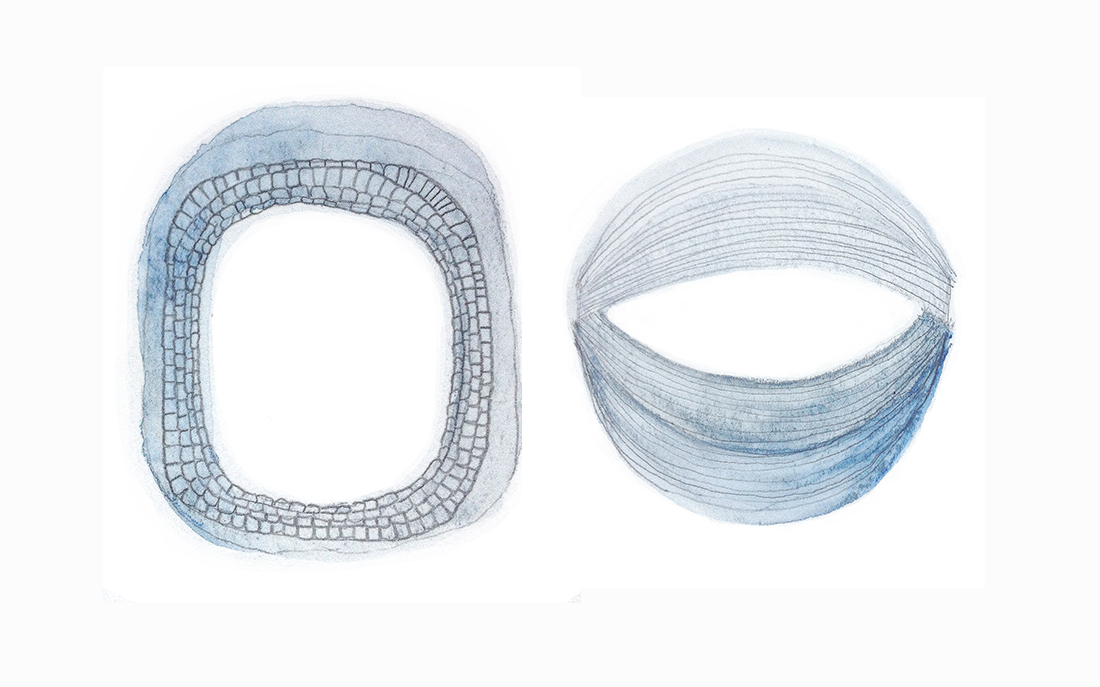Back in 1997 I started to write regular features on sustainability themes in fashion and textiles in a magazine called Eco Design, the journal of the now disbanded (and much missed) Ecological Design Association. Eco Design was first printed in the early 1990s and reflected the radical, grounded and alternative scope of early ideas of design and sustainability. It was a maverick publication and it contributed in no small way to the community and ideas that shape the way we understand the interplay between sustainability and design practice today.
Recently I dug out some old issues of Eco Design and scanned and uploaded the small contributions I’d made to it to the publications page of this website. Written between 10 and 15 years ago; they are quirky pieces, naïve maybe, but still useful and reflective of the sorts of issues and approaches that continue to be mainstays of our fashion and sustainability discussions today. They range from alternative materials to localism; and from the role of the designer to issues associated with laundering our clothes.
In those intervening years, so much has changed in the fashion and sustainability landscape (more people engaged with the ideas; more understanding; more cultural acceptability etc); and also, it appears, so little. For it seems that the themes we are grappling with today are also those of a decade and more ago. And in spite of our best efforts, it is still unclear whether as a society (and a sector within that society) we are moving towards greater ecological integrity, human empathy, interconnectedness with each other and the natural world (planetary indicators suggest that we are not (Rockström et al, 2009)). Can it be that we are expending our energies – our minds and bodies – on the wrong challenges? Or is it more that making fashion more resource and worker efficient is one helluva task which needs nothing short of continuous effort, over a very long time frame?
Perceptions have to change. Otherwise the problems we thought we’d fixed, prove to be enduring.
It’s probably a bit of both. But the former line of questioning is drowned out by the clamour around the latter: growing numbers of people are looking for opportunities to make today’s way of thinking about and doing fashion lower impact – to ‘green’ existing practices. But I think it is time that we throw our energies elsewhere. Of all the things I have learned over the last 15 years, perhaps the most important is that the realisation that crisis of ‘unsustainability’ is in Steven Sterling’s words, ‘a crisis of perception’ (2001). Perceptions – our ways of thinking – have to change. If they don’t, then we inevitably build ‘old’ habits of mind into our ‘new’ solutions and little really changes. The problems we thought we’d fixed, prove to be enduring, and keep reasserting themselves in ever more confounding ways. Instead our task is different: to transform the faulty logic of a way of thinking that presumes ‘adding’ sustainability to today’s fashion sector will solve deep ethical and moral questions; and in its place practice the art of living in these questions. Those with this skill will begin to notice and cultivate alternative opportunities for fashion that helps us all bloom.
Eco Design articles available on this website
Consumption: Why we need clothes
Design: Practice Imperfect; Fashion Reinvented; Textile Design: Local & Global Politics
Materials and processing: Why Hemp Has Yet to Reach a High; Cotton Tales; Alternative Materials; To dye or not to dye
Use: Clean and green
Recycling: The beginning of the end of life
References
Rockström, J., Steffen W., Noone K., Persson Å., Chapin III, F. S., Lambin, E., Lenton, T. M., Scheffer, M., Folke, C., Schellnhuber, H., Nykvist, B., De Wit, C. A., Hughes, T., van der Leeuw, S. Rodhe, H., Sörlin, S., Snyder, P. K., Costanza, R., Svedin, U. Falkenmark, M., Karlberg, L., Corell, R. W., Fabry, V. J., Hansen, J., Walker, B., Liverman, D., Richardson, K., Crutzen, P. & Foley, J. (2009), ‘Planetary boundaries: exploring the safe operating space for humanity’. Ecology and Society vol. 14, no. 2. [online] URL: http://www. ecologyandsociety.org/vol14/iss2/art32/ (accessed 1 November 2011).
Sterling, S. (2001), Sustainable Education: Re-visioning Learning and Change, Totnes: Green Books.
For information on how to cite this blog post click here.



